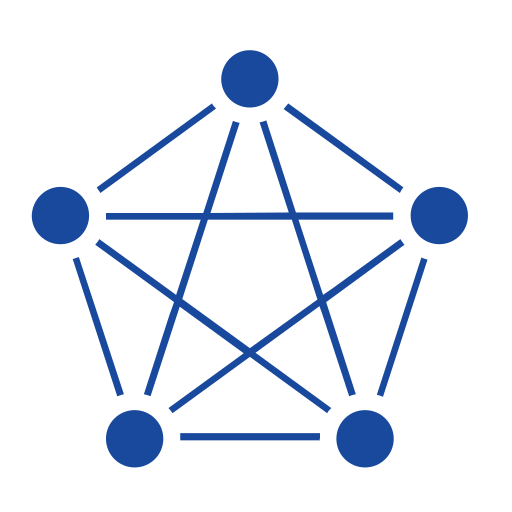ClickHouse vs TDengine
A detailed comparison
Compare ClickHouse and TDengine for time series and OLAP workloads
Learn About Time Series DatabasesChoosing the right database is a critical choice when building any software application. All databases have different strengths and weaknesses when it comes to performance, so deciding which database has the most benefits and the most minor downsides for your specific use case and data model is an important decision. Below you will find an overview of the key concepts, architecture, features, use cases, and pricing models of ClickHouse and TDengine so you can quickly see how they compare against each other.
The primary purpose of this article is to compare how ClickHouse and TDengine perform for workloads involving time series data, not for all possible use cases. Time series data typically presents a unique challenge in terms of database performance. This is due to the high volume of data being written and the query patterns to access that data. This article doesn’t intend to make the case for which database is better; it simply provides an overview of each database so you can make an informed decision.
ClickHouse vs TDengine Breakdown
 |
 |
|
| Database Model | Columnar database |
Time series database |
| Architecture | ClickHouse can be deployed on-premises, in the cloud, or as a managed service. |
TDengine can be deployed on-premises, in the cloud, or as a hybrid solution, allowing flexibility in deployment and management. |
| License | Apache 2.0 |
AGPL 3.0 |
| Use Cases | Real-time analytics, big data processing, event logging, monitoring, IoT, data warehousing |
IoT data storage, industrial monitoring, smart energy, smart home, monitoring and observability |
| Scalability | Horizontally scalable, supports distributed query processing and parallel execution |
Horizontally scalable with clustering and built-in load balancing. TDengine also provides decoupled compute and storage as well as object storage support for data tiering in some versions |
Looking for the most efficient way to get started?
Whether you are looking for cost savings, lower management overhead, or open source, InfluxDB can help.
ClickHouse Overview
ClickHouse is an open source columnar database management system designed for high-performance online analytical processing (OLAP) tasks. It was developed by Yandex, a leading Russian technology company. ClickHouse is known for its ability to process large volumes of data in real-time, providing fast query performance and real-time analytics. Its columnar storage architecture enables efficient data compression and faster query execution, making it suitable for large-scale data analytics and business intelligence applications.
TDengine Overview
TDengine is a high-performance, open source time series database designed to handle massive amounts of time series data efficiently. It was created by TAOS Data in 2017 and is specifically designed for Internet of Things (IoT), Industrial IoT, and IT infrastructure monitoring use cases. TDengine has a unique hybrid architecture that combines the advantages of both relational and NoSQL databases, providing high performance, easy-to-use SQL for querying, and flexible data modeling capabilities.
ClickHouse for Time Series Data
ClickHouse can be used for storing and analyzing time series data effectively, although it is not explicitly optimized for working with time series data. While ClickHouse can query time series data very quickly once ingested, it tends to struggle with very high write scenarios where data needs to be ingested in smaller batches so it can be analyzed in real time.
TDengine for Time Series Data
TDengine is designed from the ground up as a time series database, so it will be a good fit for most use cases that heavily involve storing and analyzing time series data.
ClickHouse Key Concepts
- Columnar storage: ClickHouse stores data in a columnar format, which means that data for each column is stored separately. This enables efficient compression and faster query execution, as only the required columns are read during query execution.
- Distributed processing: ClickHouse supports distributed processing, allowing queries to be executed across multiple nodes in a cluster, improving query performance and scalability.
- Data replication: ClickHouse provides data replication, ensuring data availability and fault tolerance in case of hardware failures or node outages.
- Materialized Views: ClickHouse supports materialized views, which are precomputed query results stored as tables. Materialized views can significantly improve query performance, as they allow for faster data retrieval by avoiding the need to recompute the results for each query.
TDengine Key Concepts
- Super Table: A template for creating multiple tables with the same schema. It’s similar to the concept of table inheritance in some other databases.
- Sub Table: A table created based on a Super Table, inheriting its schema. Sub Tables can have additional tags for categorization and querying purposes.
- Tag: A metadata attribute used to categorize and filter Sub Tables in a Super Table. Tags are indexed and optimized for efficient querying.
ClickHouse Architecture
ClickHouse’s architecture is designed to support high-performance analytics on large datasets. ClickHouse stores data in a columnar format. This enables efficient data compression and faster query execution, as only the required columns are read during query execution. ClickHouse also supports distributed processing, which allows for queries to be executed across multiple nodes in a cluster. ClickHouse uses the MergeTree storage engine as its primary table engine. MergeTree is designed for high-performance OLAP tasks and supports data replication, data partitioning, and indexing.
TDengine Architecture
TDengine uses a cloud native architecture that combines the advantages of relational databases (support for SQL querying) and NoSQL databases (scalability and flexibility).
Free Time-Series Database Guide
Get a comprehensive review of alternatives and critical requirements for selecting yours.
ClickHouse Features
Real-time analytics
ClickHouse is designed for real-time analytics and can process large volumes of data with low latency, providing fast query performance and real-time insights.
Data compression
ClickHouse’s columnar storage format enables efficient data compression, reducing storage requirements and improving query performance.
Materialized views
ClickHouse supports materialized views, which can significantly improve query performance by precomputing and storing query results as tables.
TDengine Features
Data ingestion
TDengine supports high-speed data ingestion, with the ability to handle millions of data points per second. It supports batch and individual data insertion.
Data querying
TDengine provides ANSI SQL support with additional that allows users to easily query time series data using familiar SQL syntax. It supports various aggregation functions, filtering, and joins.
Data retention and compression
TDengine automatically compresses data to save storage space and provides data retention policies to automatically delete old data.
ClickHouse Use Cases
Large-scale data analytics
ClickHouse’s high-performance query engine and columnar storage format make it suitable for large-scale data analytics and business intelligence applications.
Real-time reporting
ClickHouse’s real-time analytics capabilities enable organizations to generate real-time reports and dashboards, providing up-to-date insights for decision-making.
Log and event data analysis
ClickHouse’s ability to process large volumes of data in real-time makes it a suitable choice for log and event data analysis, such as analyzing web server logs or application events.
TDengine Use Cases
IoT data storage and analysis
TDengine is designed to handle massive amounts of time series data generated by IoT devices. Its high-performance ingestion, querying, and storage capabilities make it a suitable choice for IoT data storage and analysis.
Industrial IoT monitoring
TDengine can be used to store and analyze data from industrial IoT sensors and devices, helping organizations monitor equipment performance, detect anomalies, and optimize operations.
Infrastructure Monitoring
TDengine can be used to collect and analyze time series data from IT infrastructure components, such as servers, networks, and applications, facilitating real-time monitoring, alerting, and performance optimization.
ClickHouse Pricing Model
ClickHouse is an open source database and can be deployed on your own hardware. The developers of ClickHouse have also recently created ClickHouse Cloud which is a managed service for deploying ClickHouse.
TDengine Pricing Model
TDengine is open source and free to use under the AGPLv3 license. TDengine also offers commercial licenses and enterprise support options for organizations that require additional features, support, or compliance with specific licensing requirements.
Get started with InfluxDB for free
InfluxDB Cloud is the fastest way to start storing and analyzing your time series data.
